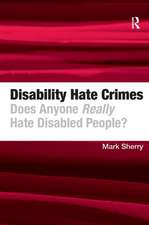Hazardous Waste and Pollution: Detecting and Preventing Green Crimes
Editat de Tanya Wyatten Limba Engleză Hardback – 23 sep 2015
Examining cases from the US, Europe and Australia, this volume compares and contrasts international approaches for regulating hazardous substances, and enforcing those regulations. This work will be of interest to researchers in criminology and criminal justice, particularly interested in green criminology or environmental law, as well as researchers in environmental sciences, white collar and corporate crime, and policymakers.
| Toate formatele și edițiile | Preț | Express |
|---|---|---|
| Paperback (1) | 382.18 lei 43-57 zile | |
| Springer International Publishing – 23 aug 2016 | 382.18 lei 43-57 zile | |
| Hardback (1) | 389.49 lei 43-57 zile | |
| Springer International Publishing – 23 sep 2015 | 389.49 lei 43-57 zile |
Preț: 389.49 lei
Nou
Puncte Express: 584
Preț estimativ în valută:
74.54€ • 77.38$ • 62.15£
74.54€ • 77.38$ • 62.15£
Carte tipărită la comandă
Livrare economică 24 martie-07 aprilie
Preluare comenzi: 021 569.72.76
Specificații
ISBN-13: 9783319180809
ISBN-10: 3319180800
Pagini: 250
Ilustrații: XI, 179 p.
Dimensiuni: 155 x 235 x 17 mm
Greutate: 0.45 kg
Ediția:1st ed. 2016
Editura: Springer International Publishing
Colecția Springer
Locul publicării:Cham, Switzerland
ISBN-10: 3319180800
Pagini: 250
Ilustrații: XI, 179 p.
Dimensiuni: 155 x 235 x 17 mm
Greutate: 0.45 kg
Ediția:1st ed. 2016
Editura: Springer International Publishing
Colecția Springer
Locul publicării:Cham, Switzerland
Public țintă
ResearchCuprins
Chapter 1: The brownness of green crimes and harms Tanya Wyatt.- Part 1: Understanding Hazardous Waste and Pollution.- Chapter 2: Green criminology, brown crime and problems of despoiling, disposal and de-manufacturing in global resource industries Nigel South.- Chapter 3: Electronic waste, brown crime and the EU Lieselot Bisschop.- Chapter 4: Smuggling networks and the black market in ozone depleting substances Lorraine Elliott.- Part 2: Environmental Justice Concerns.- Chapter 5: Pollution, Access and Binary Division: Water Activism and a Human Right to Water Bill McClanahan.- Chapter 6: Environmental Inequality within US communities containing coal and nuclear power plants Sarah Kosmicki and Michael Long.- Chapter 7: Is it a Crime to Produce Ecological Disorganization? Why Green Criminology and Political Economy Matter in the Analysis of Global Ecological Harms Michael Lynch, Michael Long, Kimberly Barrett and Paul Stretesky.- Part 3: Corporations and Brown Crime.- Chapter 8: Accidents with dangerous substances in the Dutch chemical industry Marieke Kluin.- Chapter 9: Cleaning Up Greenwash: A critical evaluation of the activities of oil companies in the Niger Angus Nurse.-Chapter 10: Legal and extralegal enforcement of pollution by sea-going vessels Judith van Erp, Toine Spapens, and Karin van Wingerde.
Notă biografică
Tanya Wyatt is a Principal Lecturer in Criminology at Northumbria University. Her research focuses on green crimes, such as wildlife trafficking and animal welfare, and these crimes’ intersection with organized crime and terrorism. She also conducts research around invisible crimes, including crimes of the powerful such as bio-piracy.
Textul de pe ultima copertă
This volume examines crimes that violate environmental regulations, as part of an emerging area of criminology known as green criminology. The contributions to this book examine criminal justice concerns related to regulating and enforcing environmental laws, as well as the consequences for families and communities impacted by hazardous waste and pollution. It also describes possible strategies for deterring and preventing organized crime related to environmental regulations, including black market sales of ozone depleting substances. This innovative volume provides a criminological framework for understanding environmental harms.
Examining cases from the US, Europe and Australia, this volume compares and contrasts international approaches for regulating hazardous substances, and enforcing those regulations. This work will be of interest to researchers in criminology and criminal justice, particularly interested in green criminology or environmental law, as well as researchers in environmental sciences, white collar and corporate crime, and policymakers.
Examining cases from the US, Europe and Australia, this volume compares and contrasts international approaches for regulating hazardous substances, and enforcing those regulations. This work will be of interest to researchers in criminology and criminal justice, particularly interested in green criminology or environmental law, as well as researchers in environmental sciences, white collar and corporate crime, and policymakers.
Caracteristici
Examines environmental regulations and violations against them from a criminological perspective Provides an international, comparative perspective from North America, Europe, and Australia Includes case studies of environmental justice, concerning families and communities impacted by environmental harms Includes supplementary material: sn.pub/extras













